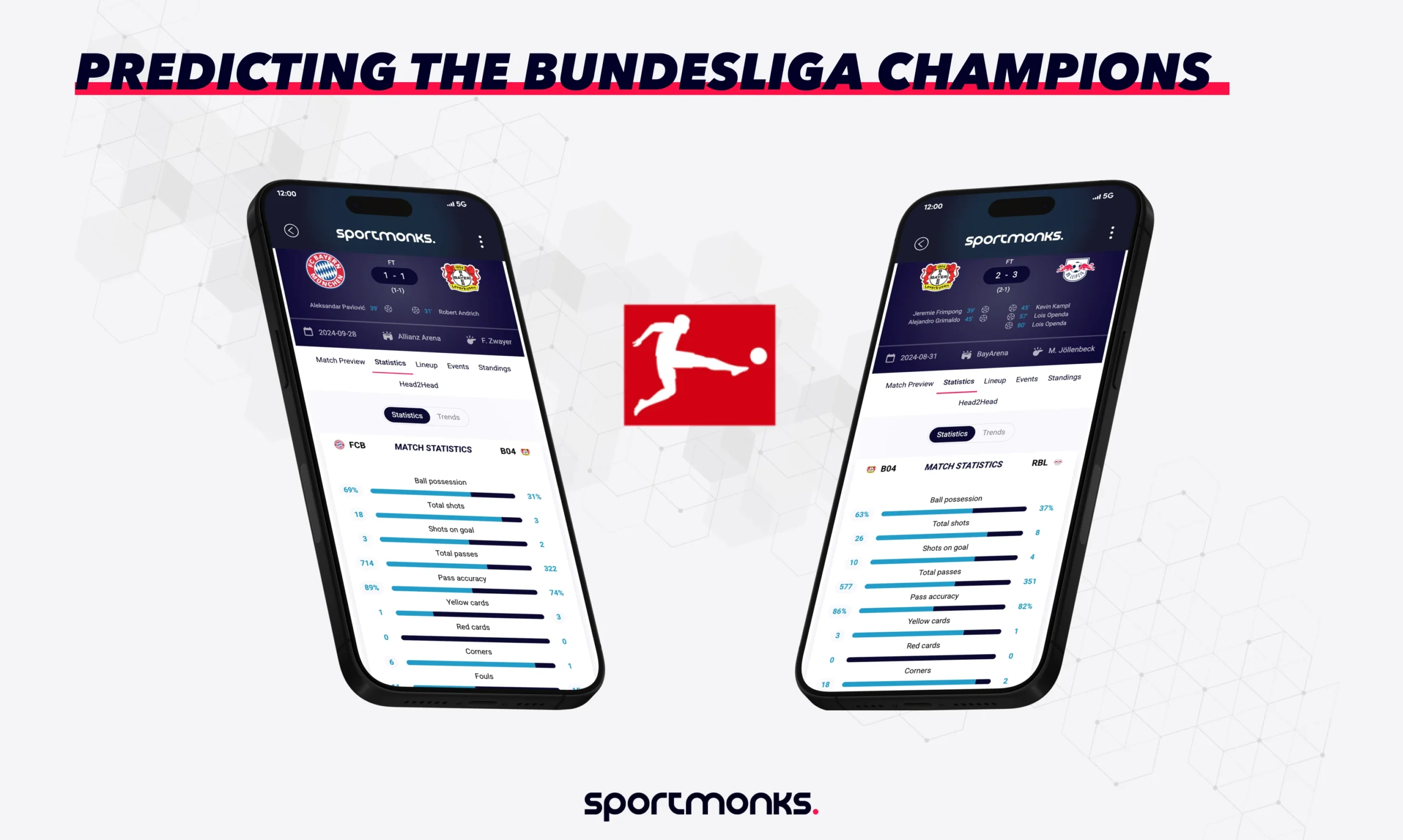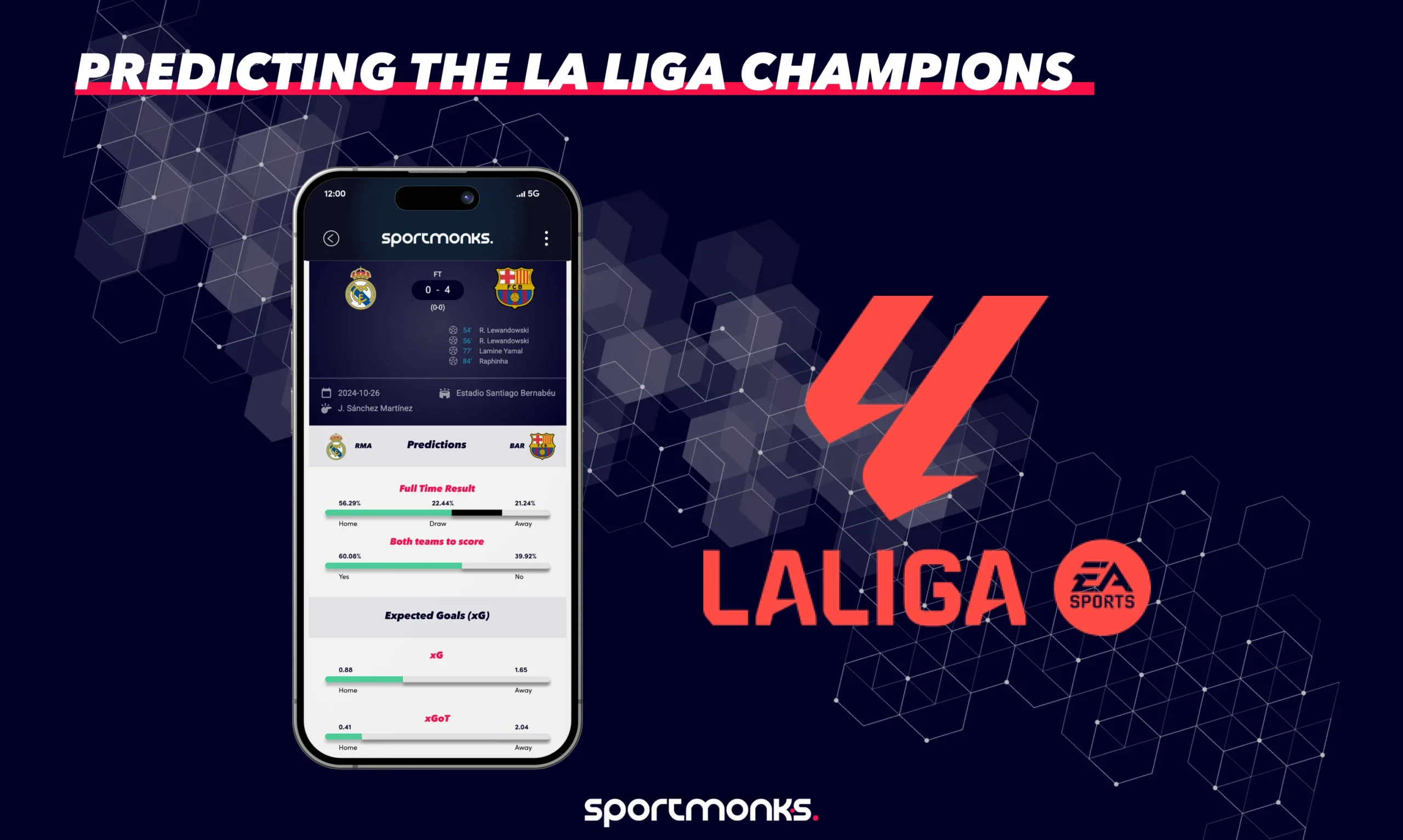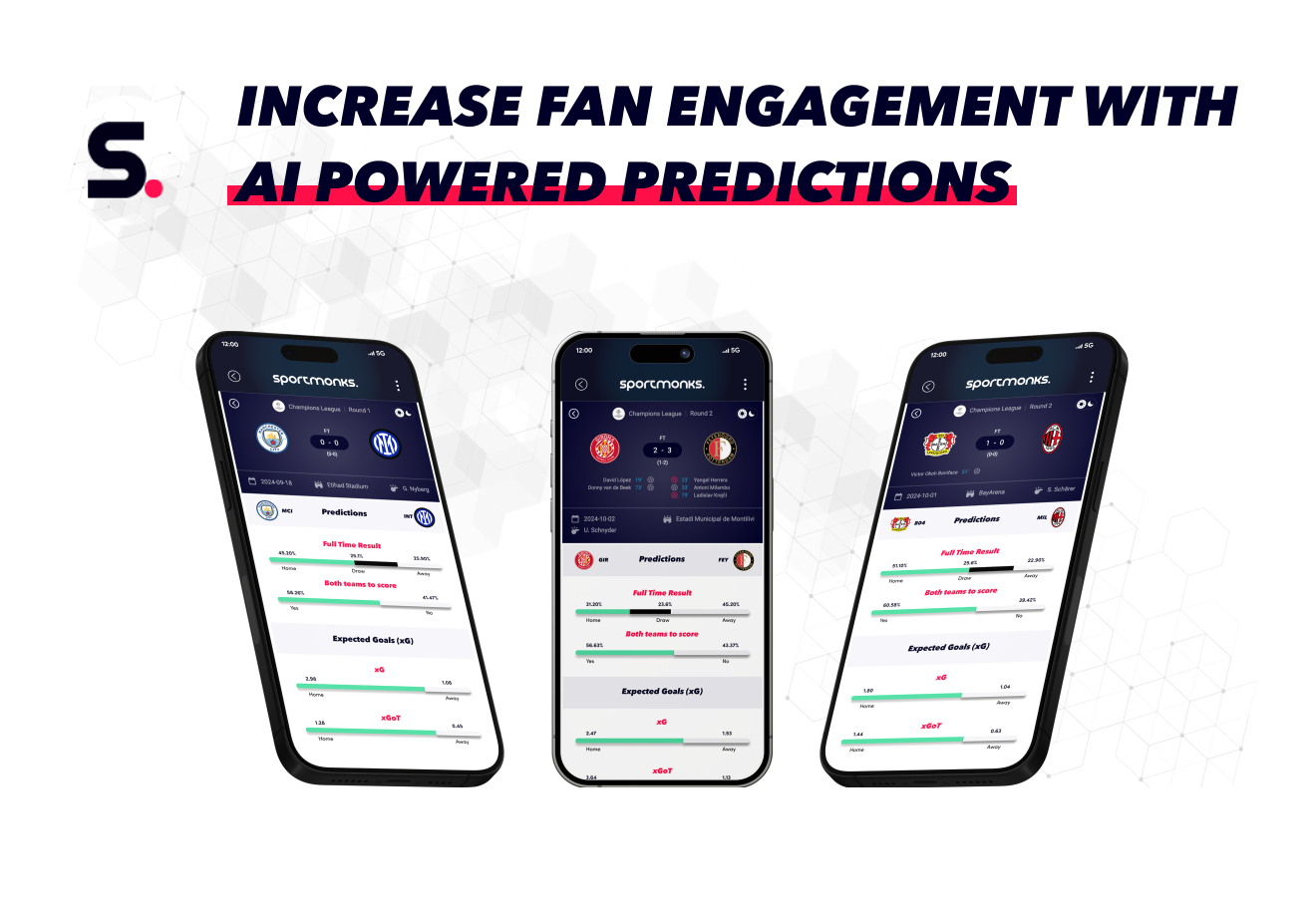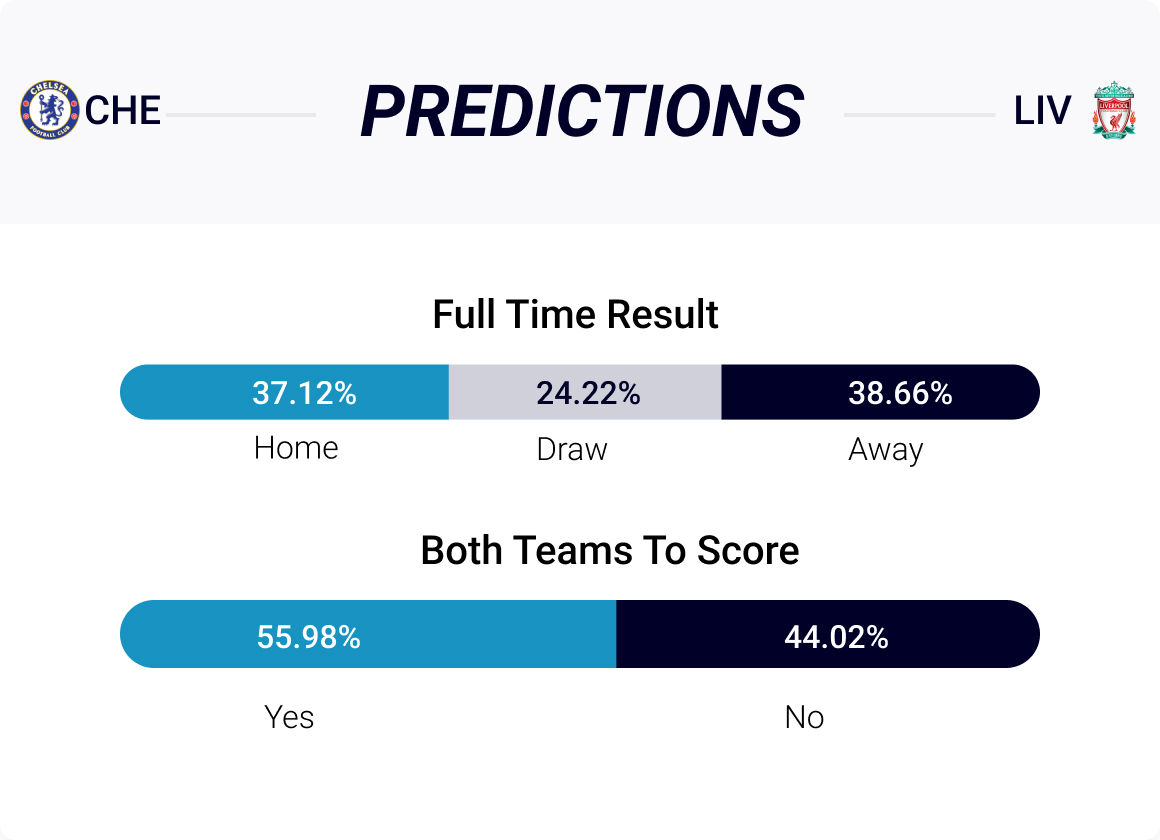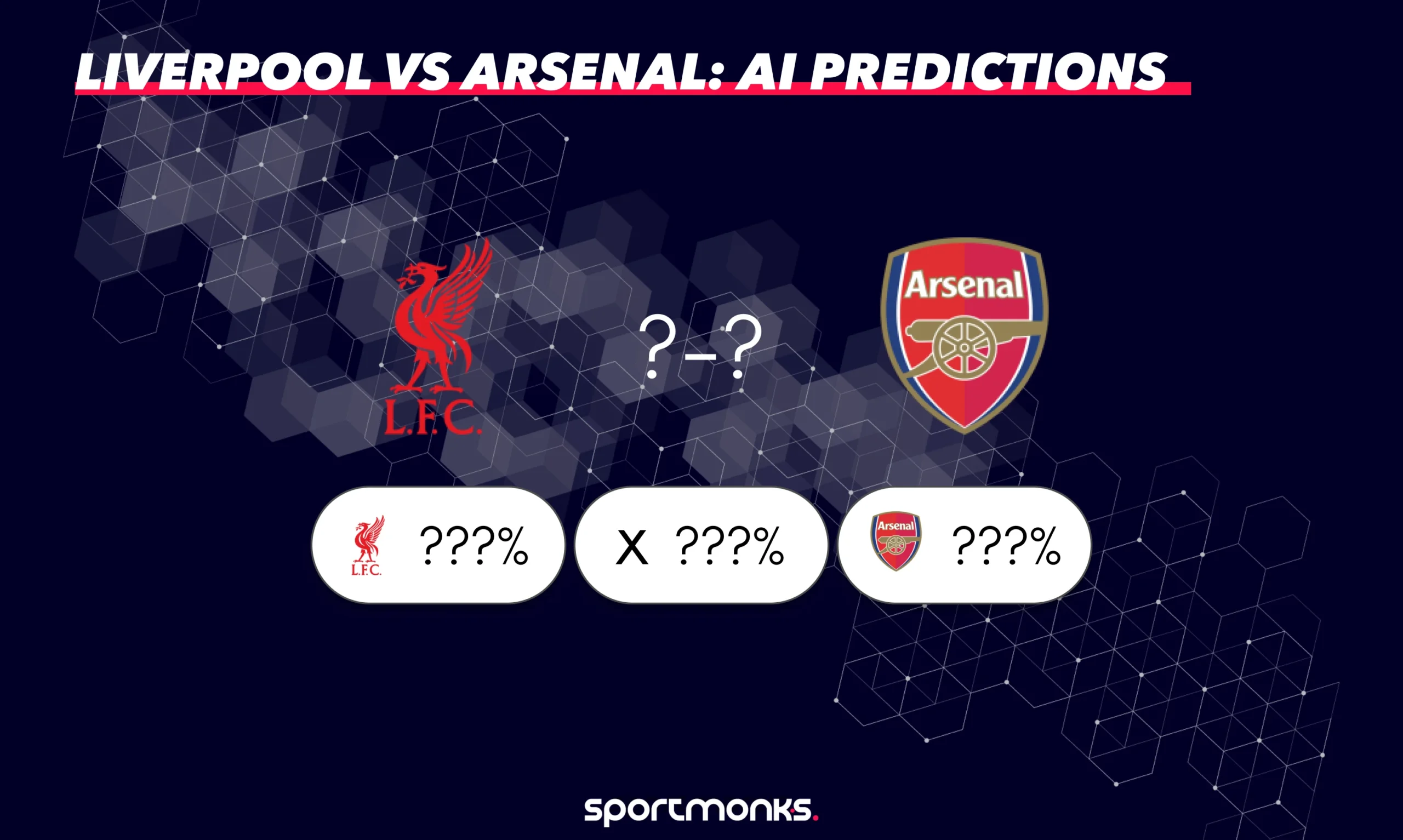
Contents
Liverpool vs Arsenal and how AI is shaping football predictions for the Premier League’s biggest rivalries
Understanding tactics changes with AI
Sportmonks’ AI-powered data reveals how tactics have changed in the Liverpool versus Arsenal rivalry. It goes beyond what happened to why. For example, AI can analyse pressing. Has one team always pressed high, or has a mid-block been better?
Sportmonks’ pressure and passing data shows these shifts using the pressure index. Maybe quick passes by one team forced the other to defend deeper.
AI can also show how attacks have changed. Has passing become more direct? Sportmonks’ data on pass types and shots reveals these changes. Maybe a focus on possession changed to quick counter-attacks after a new manager arrived.
AI also reveals player impact. Has one player always dominated their opponent?
Sportmonks’ data unlocks deeper insights into this rivalry. It’s not just about who won, but how, and how these battles have evolved.
Arsenal: A case study in positional play evolution
Arsenal, throughout their history, have often been synonymous with intricate passing and positional play. Sportmonks’ data can show how this tactical philosophy has evolved over time. By analysing passing networks, player positioning, and possession statistics, AI can reveal subtle shifts in Arsenal’s approach. Perhaps a focus on short, intricate passes gave way to a more direct style, or maybe the team’s defensive structure shifted in response to changes in the opponent’s tactics.
Sportmonks’ AI-powered data allows us to track these changes, revealing how Arsenal’s tactical identity has adapted and evolved while still maintaining its core principles. For instance, AI might reveal periods where Arsenal prioritised quick, vertical passes to break through defensive lines, contrasting with eras where they focused on intricate build-up play in their own half. And as of recent, Arsenal implement a high press to force opposition into turnovers while also keeping a high line to minimise counter-attacks and catch opposition attackers with their offside traps.
Sportmonks’ pass type data (through balls, long passes, short passes) can illustrate these shifts. Perhaps a change in manager or a shift in player personnel prompted these tactical adjustments. Furthermore, AI can analyse how Arsenal’s positional play has evolved. Have they favoured a fluid system where players rotate positions seamlessly, or have they adopted a more rigid structure?
Sportmonks’ player tracking data can map these movements, revealing how players occupy space and create passing lanes. Perhaps a move towards a more flexible system allowed certain players to thrive in multiple roles, while a more structured approach maximised the strengths of specific individuals. This thorough analysis, powered by Sportmonks’ data, helps us understand not just what Arsenal did, but why they did it, providing valuable insights into the evolution of their distinctive style. It allows us to appreciate the subtle tactical nuances that have defined Arsenal’s play over the years
Liverpool: Evolving the Klopp legacy under Slot
The Jürgen Klopp era at Liverpool was defined by high-intensity pressing, lightning-fast transitions, and a relentless attacking spirit. Sportmonks’ data provided a detailed analysis of this distinctive style, quantifying its effectiveness and revealing its nuances. However, with the transition to Arne Slot, Liverpool is entering a new chapter, one where Klopp’s foundational principles are being adapted and evolved.
While the core philosophy of high-pressing and quick transitions likely remains, Slot is bringing his own tactical imprint to Anfield. Using Sportmonks’ data, we can track how these changes are unfolding. Are we seeing subtle shifts in the areas of the pitch where Liverpool focuses their pressing? Are there more personnel changes e.g. using more inverted wingers instead of traditional ones?
Sportmonks’ real-time data feeds will be crucial in monitoring these adjustments as the season progresses. Perhaps Slot is emphasising a slightly more possession-based approach, building on Klopp’s foundations but adding his own twist. AI can analyse changes in passing networks, possession percentages, and pass types to reveal these modifications. Sportmonks’ data on pass completion rates, through balls and pass locations can illuminate how Slot is shaping Liverpool’s build-up play. Furthermore, AI can analyse how Liverpool are adapting their tactics against different opponents under Slot. Are they maintaining a consistent approach, or are they tailoring their strategies more specifically to the opposition’s strengths and weaknesses?
Sportmonks’ data on opponent pass completion rates, defensive actions, and shots faced will be key to understanding these tactical variations. While Klopp’s legacy is undeniable, Arne Slot’s arrival marks a new phase in Liverpool’s tactical evolution. Sportmonks’ API-powered data will be instrumental in understanding how this evolution unfolds, revealing how Slot is building upon Klopp’s foundation while adding his own stamp to the team’s playing style.
Liverpool vs. Arsenal: Data-driven insights
Let’s break down the key stats for Liverpool and Arsenal to see how their playing styles compare. We’re using data from Sportmonks’ API to give you a clear picture without the confusing jargon.
Liverpool FC: At a Glance
– Possession: Liverpool controls the ball about 58.03% of the time, showing a similar focus on keeping possession.
– Goals scored: Liverpool has scored 80 goals, with 21 in the first half and 59 in the second. Like Arsenal, they tend to pull ahead after the break. A notable star who has contributed to this number is Mohammed Salah.
– Interceptions per game: Averaging 8.18 interceptions, Liverpool shows a strong ability to win back the ball quickly through high pressing.
– Assists per game: Their 1.74 assists per game underline their knack for creating scoring opportunities.
– Passes per goal: With 249.43 passes needed for each goal, Liverpool’s play is a bit more direct while still relying on possession.
– Shots per game: Taking about 17 shots per game, Liverpool’s attacking style is more aggressive compared to Arsenal.
Arsenal FC: At a glance
– Possession: Arsenal holds the ball about 57.21% of the time. They focus on keeping control, though Liverpool has a slight edge with 58%.
– Goals scored: They’ve netted 63 goals this season—14 in the first half and 49 in the second. Scoring more in the second half might mean they make smart changes at halftime or wear down their opponents. Before his injury crisis, Bukayo Saka was one of Arsenal’s top scorers.
– Interceptions per game: Arsenal averages about 6.35 interceptions per match. This shows how often they win the ball back, though Liverpool does it a bit more at over 8 per game.
– Assists per game: With 1.5 assists per game, Arsenal shows strong creativity. Liverpool is just a bit higher at 1.76, indicating both teams create chances well.
– Passes per goal: Arsenal needs about 270 passes to score a goal, which highlights their patient, build-up style of play. Liverpool’s 249.43 passes per goal suggest a slightly more direct approach.
– Shots per game: Arsenal takes around 14.2 shots per game. This reflects their attacking intent, though Liverpool goes for it with 17 shots per game.
What does this tell us?
Both teams love to control the ball, but Liverpool seems to push a bit harder with more shots and interceptions, indicating a faster, more direct style. Arsenal, on the other hand, prefers a patient build-up with intricate passing. Using these numbers, we get a clear, data-backed look at how each team plays this season, and it’s no surprise that these two teams are the fore-runners in the title race.
With the above stats, it’s no surprise that Liverpool went on to win the EPL title last weekend, after thumping Spurs with a 5 star display.
From insight to action: Applying AI-driven tactical analysis
This AI analysis of Liverpool vs. Arsenal match-up isn’t just for tech geeks—it offers real help for everyone involved in the game.
– For coaches: AI studies past games to spot patterns and trends. This means coaches can better guess what their opponents might do next. If the data shows a team often struggles against a certain type of play, coaches can focus training on that area and adjust their game plans accordingly.
– For players: Players can learn a lot from AI too. By understanding the detailed breakdown of how matches unfold, they can better see their own roles on the pitch. For example, if the data highlights a risky period where a team usually concedes goals, players can be more alert to turnovers or lapses in concentration to improve results. This insight helps them improve by learning from past successes and errors.
– For fans: Even fans get a deeper look into the game with AI-powered analysis. It’s not just about the scores; it’s about seeing the hidden battles and strategies at work. Fans can enjoy a more complete picture of why certain plays succeed and appreciate the clever moves that shape the game.
In short, AI transforms raw numbers into clear, useful insights for coaches, players, and fans alike. It’s not only about predicting what will happen—it’s about understanding the game as it unfolds and learning from every play, making football even more exciting to watch and play.
Sportmonks: Fuelling the AI revolution in football
The AI wave in football relies on great, reliable data—and Sportmonks is right at the heart of it. They provide a huge collection of football stats through their API, giving us everything from basic numbers like goals and assists to advanced details like expected goals (xG), pressure indexes, pass types, and even player tracking.
Why it matters
– Deep dive into history: Sportmonks’ historical data lets AI study past matches to spot trends. This helps us understand how tactics have evolved over time—like how the Liverpool vs. Arsenal rivalry has changed—and makes it easier to predict future moves.
– Real-time game insights: During live matches, Sportmonks feeds real-time data to AI tools. This helps identify new patterns, track player performance, and even forecast key moments in the game. Coaches can use these insights to make smart, on-the-fly adjustments.
– A true partnership: Sportmonks isn’t just about raw numbers. We work closely with data analysts, and coaches to constantly improve and deliver the best football data available. Our commitment is helping shape a future where AI brings even more understanding and excitement to the beautiful game.
With Sportmonks data, you can dive deep into the statistics about your favourite team, player or league and see past what most other football enthusiasts and even analysts see, which helps you make informed decisions in all your football activities. Try Sportmonks today and see the difference.
